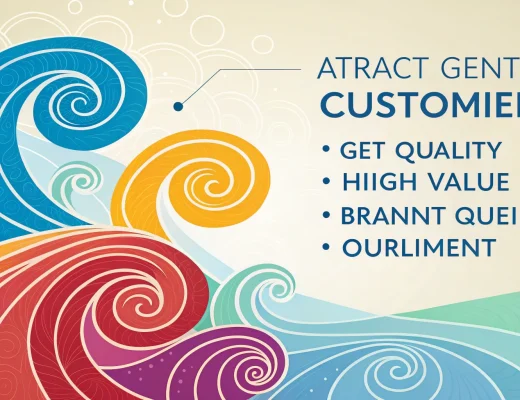Spotify has transformed how artists share their music and earn money. But many wonder, how much do artists make on Spotify? This article explores Spotify’s payment structure, earnings per stream, and ways artists can maximize their income on the platform.
Key Takeaways
- Artists earn about $0.003 to $0.005 per stream on Spotify.
- A million streams can generate between $1,000 and $8,000 for artists.
- Independent artists can still earn money without a record label through distributors.
- Using Spotify for Artists helps artists track their performance and promote their music.
- Diversifying income through merchandise sales and teaching can boost earnings beyond streaming.
Understanding Spotify’s Payment Structure
When I first started exploring how artists get paid on Spotify, I was surprised by how complex it is. Spotify has a unique payment system that determines how much money artists earn from their music. Let’s break it down into simpler parts.
How Royalties Are Calculated
Spotify pays artists based on a system that pools money from subscriptions and ads. This money is then divided among all the artists based on how many times their songs are streamed. The more streams you have, the bigger your slice of the pie! For example, if Spotify pays around $0.003 to $0.005 per stream, it can really add up if you have a lot of listeners.
The Role of Distributors and Labels
Another important piece of the puzzle is the role of distributors and labels. They help get the music onto Spotify, but they also take a cut of the earnings. This means that the amount you actually receive can be less than what Spotify pays out. It’s crucial to choose a distributor that allows you to keep as much of your earnings as possible.
Factors Influencing Earnings
Several factors can influence how much an artist makes on Spotify:
- Listener’s Subscription Type: Premium users generate more revenue than free users.
- Country of Listeners: Different countries have different payout rates. For instance, listeners in the U.S. pay more per stream than those in Portugal.
- Popularity of the Artist: More popular artists tend to get more streams, which means more money.
Understanding these elements can help artists navigate the tricky waters of streaming payments. It’s a lot to take in, but knowing how it works can empower artists to make better decisions about their music careers.
Also, it’s worth noting that Spotify has made some changes recently, like cutting developer access to certain features, which can affect how artists promote their music. Keeping up with these changes is essential for anyone serious about their music career!
Breaking Down the Earnings Per Stream
Average Revenue Per Stream
When I first started sharing my music on Spotify, I was curious about how much I could earn from each stream. On average, Spotify pays artists between $0.003 and $0.005 per stream. This means that for every 1,000 streams, an artist might earn around $3 to $5. It’s not a lot, but every little bit counts!
Impact of Listener’s Subscription Type
One thing I learned is that the type of subscription a listener has can really change how much an artist earns. Here’s a quick breakdown:
- Premium Subscribers: They contribute more to the royalty pool, which means artists earn more from their streams.
- Free Users: These listeners generate less revenue per stream since they don’t pay a subscription fee.
Regional Differences in Payouts
Another interesting factor is where the listener is located. Payments can vary by country due to different subscription costs and market values. For example, artists might earn more from streams in countries with higher subscription rates. It’s a complex system, but understanding these differences can help artists strategize their releases better.
In conclusion, while the earnings per stream on Spotify might seem low, they can add up over time, especially when you consider the impact of subscription types and regional differences. Every stream is a step towards building a sustainable income in the music world!
Maximizing Income on Spotify
Utilizing Spotify for Artists
As an artist, one of the best tools I’ve found is Spotify for Artists. This platform allows me to manage my profile, see who’s listening to my music, and even submit songs for playlist consideration. Claiming my verified profile was a game changer! It not only gave me access to detailed analytics but also helped me connect with my audience better.
Promoting Your Music Effectively
Promoting my music effectively is crucial. Here are some strategies I use:
- Social Media: I share my music on platforms like Instagram and Twitter to reach more fans.
- Email Newsletters: I keep my fans updated about new releases and upcoming shows.
- Collaborations: Working with other artists can help me tap into their fan base.
Leveraging Playlists for Exposure
Getting my songs on playlists is key to increasing streams. I focus on:
- Submitting to Spotify’s Editorial Playlists: If my song gets picked, it can reach millions!
- Creating My Own Playlists: I include my tracks along with songs from other artists to attract listeners.
- Reaching Out to Independent Curators: I find curators who align with my music style and pitch my songs to them.
By using these methods, I’ve seen a noticeable increase in my streams and, ultimately, my earnings. Remember, the more streams I get, the more royalties I earn!
Alternative Revenue Streams for Artists
When I think about making money as an artist, I realize that it’s not just about how many streams I get on Spotify. There are many other ways to earn income while sharing my music with the world. Here are some alternative revenue streams that I’ve found helpful:
Selling Merchandise Through Spotify
Selling merch is a great way to connect with fans and make some extra cash. With the integration of Spotify and Shopify, it’s easier than ever to set up a store. I can use print-on-demand services like Printify, which handle the printing and shipping for me. This means I can focus on creating music while still making money from my brand.
Monetizing Through Blogging and Teaching
I’ve also started a blog where I share my experiences in the music industry. This not only helps me connect with my fans but also brings in some income through ads and partnerships. Teaching is another avenue I’ve explored. I create tutorials and offer courses on music production and songwriting. Platforms like Patreon and Skillshare make it easy to share my knowledge and earn money at the same time.
Exploring Sync Licensing Opportunities
Sync licensing is when my music is used in TV shows, movies, or commercials. This can be a lucrative way to earn money. I’ve learned that getting my music placed in these types of media can lead to significant payouts. It’s worth reaching out to music supervisors or using platforms that connect artists with sync opportunities.
In summary, while Spotify is a popular platform for streaming, there are many other ways to earn money as an artist. By diversifying my income streams, I can create a more stable financial future in the music industry. Remember, it’s all about creating value and finding the right opportunities!
Comparing Spotify to Other Streaming Platforms
When I think about how much artists make on different platforms, it’s clear that each one has its own strengths and weaknesses. Spotify is super popular, but how does it stack up against others like Apple Music and Amazon Music?
Differences in Payment Models
Each platform has its own way of paying artists. Here’s a quick look at how they compare:
| Platform | Average Pay Per Stream | Subscription Cost (Monthly) |
|---|---|---|
| Spotify | $0.003 – $0.005 | $10.99 (Individual) |
| Apple Music | $0.007 – $0.008 | $10.99 (Individual) |
| Amazon Music | $0.004 – $0.005 | $9.99 (Individual) |
From this table, it’s clear that Apple Music pays a bit more per stream. However, Spotify has a larger audience, which can mean more streams overall.
Artist Success Stories Across Platforms
I’ve heard many artists share their experiences:
- Some find success on Spotify due to its vast user base.
- Others prefer Apple Music for its higher payouts.
- A few have even found a niche audience on Amazon Music.
Choosing the Right Platform for Your Music
When deciding where to release your music, consider these points:
- Audience Size: More listeners can lead to more streams.
- Payment Rates: Higher rates can mean more money in your pocket.
- Features: Some platforms offer better tools for artists.
In my journey, I’ve learned that it’s important to be on multiple platforms. This way, I can reach different audiences and maximize my earnings. As I reflect on my experiences, I remember the lessons from the music industry that emphasize the importance of networking and building relationships. It’s not just about the money; it’s about connecting with fans and other artists too!
The Future of Artist Earnings on Spotify
Upcoming Changes in Spotify’s Policies
As we look ahead, Spotify is making some big changes that could affect how artists earn money. Starting in 2024, tracks will need to have at least 1,000 streams in the past year to earn royalties. This means that artists will have to work harder to get their music heard. I remember when I first started on Spotify; it felt like a huge challenge to get noticed.
Predictions for Artist Revenue Growth
Many experts believe that artist earnings on Spotify will grow in the coming years. With more people subscribing to premium services, artists could see higher payouts. However, it’s important to note that the competition is fierce. Artists will need to be creative and strategic to stand out. Here are a few predictions:
- Increased focus on independent artists.
- More tools for artists to promote their music.
- Changes in how royalties are calculated to benefit smaller artists.
How Artists Can Adapt to Changes
To thrive in this evolving landscape, artists must adapt. Here are some ways to do that:
- Utilize Spotify for Artists to track performance and gain insights.
- Engage with fans through social media and live events.
- Explore alternative revenue streams, like merchandise and sync licensing.
In my own journey, I’ve found that connecting with fans and promoting my music effectively has made a huge difference. I’ve even noticed how marketing tactics can lead to unexpected opportunities, like when I was guided to buy concert tickets while listening to my favorite playlists. It’s all about being smart and proactive in this ever-changing music world!
Frequently Asked Questions
How do artists earn money on Spotify?
Artists mainly earn money on Spotify through royalties from streams, which are paid by distributors. They can also make money by selling merchandise, blogging, and teaching.
What is the typical payment per stream on Spotify?
On average, artists earn between $0.003 and $0.005 for each stream, but this can vary based on factors like listener location and subscription type.
How much can an artist earn from 1 million streams?
The earnings from 1 million streams can range from about $1,000 to $8,000, depending on various factors like where the listeners are and how often the song is played.
How much do artists make from 5,000 streams?
For 5,000 streams, artists typically earn around $20, but this can change based on the listener’s location and subscription type.
Can independent artists make money on Spotify without a record label?
Yes, independent artists can earn money through platforms like Ditto or TuneCore, which help them distribute their music on Spotify.
What percentage of Spotify’s revenue goes to artists?
Spotify distributes about 70% of its total revenue to rights holders, which includes record labels and distributors, but the exact amount an artist receives depends on their specific contracts.







